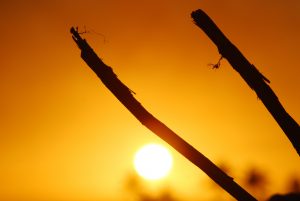
Who’d ever imagine that I’d wind up living on a wildlife preserve across the road from sugar cane fields – sugar cane grown for the sugar industry?
Karma, I guess.
It sure opened my eyes to how sugar starts from its origin.
Did you know that sugar cane is actually just a grass?
Sugar Cane Is Grass
Raw sugar commonly comes from the juice of the tropical grass sugar cane (saccharum officinarum). Sugar (in the plant) is made in the leaves of the sugar cane plant by the natural process photosynthesis and is stored as a sweet juice in the fibers of the stalks.
The plant is 6.5 feet to 16.5 feet feet tall. It has stout, jointed, fibrous stalks that are rich in sucrose, which accumulates in the stalk internodes.
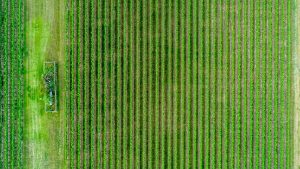
The natural sugar in the cane stalk is separated from the rest of the plant material at the sugar mill. For sugar cane, this is accomplished by the following process:
- At the mill, the sugar cane is crushed by large rollers to extract the juice;
- The extracted juice is then clarified to remove soil and impurities;
- The juice is concentrated into a syrup by boiling off the excess water, seeded with raw sugar crystals in a vacuum pan, and boiled until sugar crystals form and grow;
- The boiled mixture is spun to separate the molasses from the crystals, which are tumble dried and placed in large storage bins for transport to bulk sugar terminals or refineries;
- At the refinery, the raw sugar crystals are washed and dissolved in hot water to form syrup.
- Phosphoric acid and lime are added to the melted sugar to remove any impurities in the clarification process;
- The syrup is pressure filtered through cloth, passed through decolorizing columns containing activated carbon, boiled in a vacuum pan, and seeded with fine sugar crystals;
- When the crystals are large enough, they are discharged from the pan, centrifuged to remove excess liquid and then tumble-dried;
- The raw sugar is crystallized, dried, and packaged as refined white crystal sugars, brown sugars, liquid sugar, and syrup;
- Most raw sugar requires further processing at refineries in order to meet food manufacturers and consumers needs.
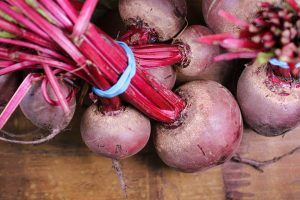
Beet Sugar
Beet sugar processing is similar to cane sugar, but it is done in one continuous process without the raw sugar stage.
The sugar beets are washed, sliced and soaked in hot water to separate the sugar-containing juice from the beet fiber. The juice is purified, filtered, concentrated and dried in a series of steps similar to cane sugar processing.
The Different Types of Processed Sugar
The most common types of processed sugar are available in many forms, but I suggest that you avoid these forms:
- Granulated Sugars
- Brown Sugars
- Liquid Sugars
Health Benefits
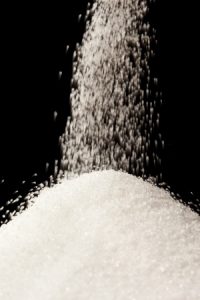
Sugar cane juice is good source of glucose, which actually helps re-hydrate your body and give you a boost of energy.
Sugarcane juice is considered an alkaline forming food because of the high concentration of calcium, magnesium, potassium, iron, and manganese in it. Remember that diseases like cancer cannot survive in an alkaline environment.
Sugar itself isn’t necessarily the “bad guy.” For hundred of years, raw sugar (sucrose) was added safely to the food supply. Natural sugars are essential to human life, and are only 15 calories per teaspoon.
Remember that you receive your energy from glucose and you can maintain a constant level in your bloodstream. Complex carbohydrates found in whole grains, fruits, and vegetables are the best source of naturally occurring sugars to satisfy your body’s demands.
Don’t be afraid of raw sugar, even if you are diabetic – it’s your healthiest choice. Used in moderation, raw sugar is the most natural source of energy that your body can assimilate more safely. It’s the simple carbs and processed sugars that send your insulin into trauma.
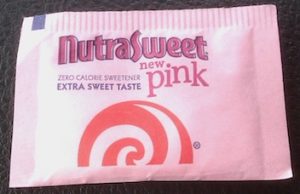
And, of course, avoid the artificial sugars.
No one needs the mounds of added refined sugars in our modern food supply. So here’s the problem: consumers have become addicted to sweeter and sweeter tastes, and they crave larger and larger portions of sweetened foods.
Emotional or psychological dependence on sugary foods and drinks – sugar addiction – is a real cause of concern. Processed foods and refined grains put additional sugar in the body after you metabolize the food.
The next time you are at the grocery store, buy a sugar cane stalk and try grating it for some natural sweetness.
_____________
If you want to learn more about healthy eating, contact me at janethull.com. Remember that you are never alone when you are looking for good health!
Gain access to all of my online programs, ongoing support, monthly Q&A, and more by joining my Private Inner Circle Membership Program. I look forward to supporting you on your journey to alternative health and wellness.
_____________
Disclaimer: This article is for informational purposes only, and is educational in nature. The FDA may not have evaluated some of the statements. This article is not intended to diagnose, treat, cure, or prevent any disease. Please discuss with your own, qualified health care provider before adding supplements or making any changes to your dietary program.
Before taking vitamins, consult your doctor; pre-existing medical conditions or medications you are taking can affect how your body responds to multivitamins.
You have our permission to reprint this article if you attribute us with a live back-link to this article and the youtube links. https://janethull.com/